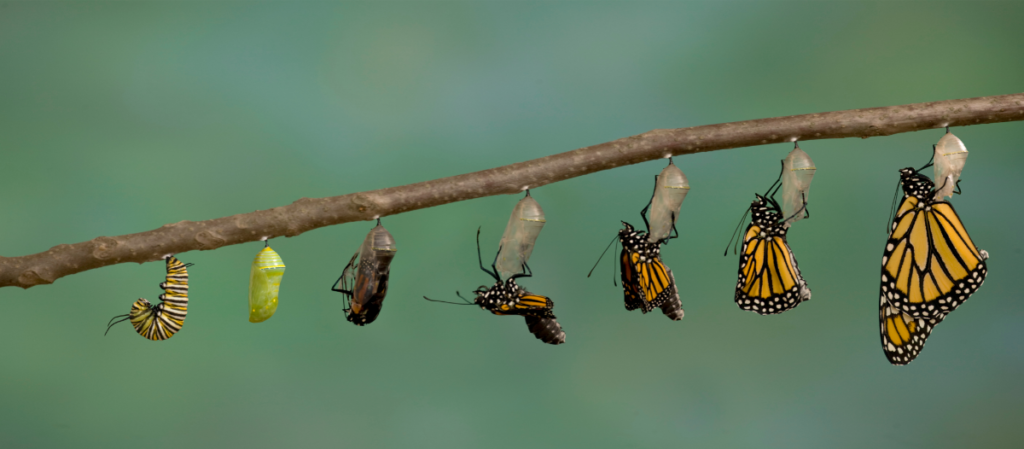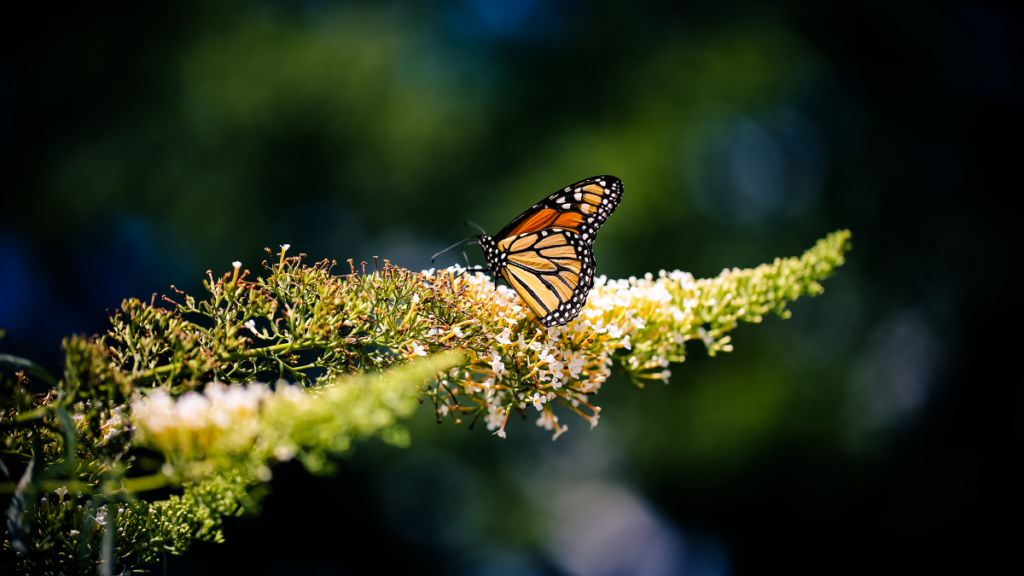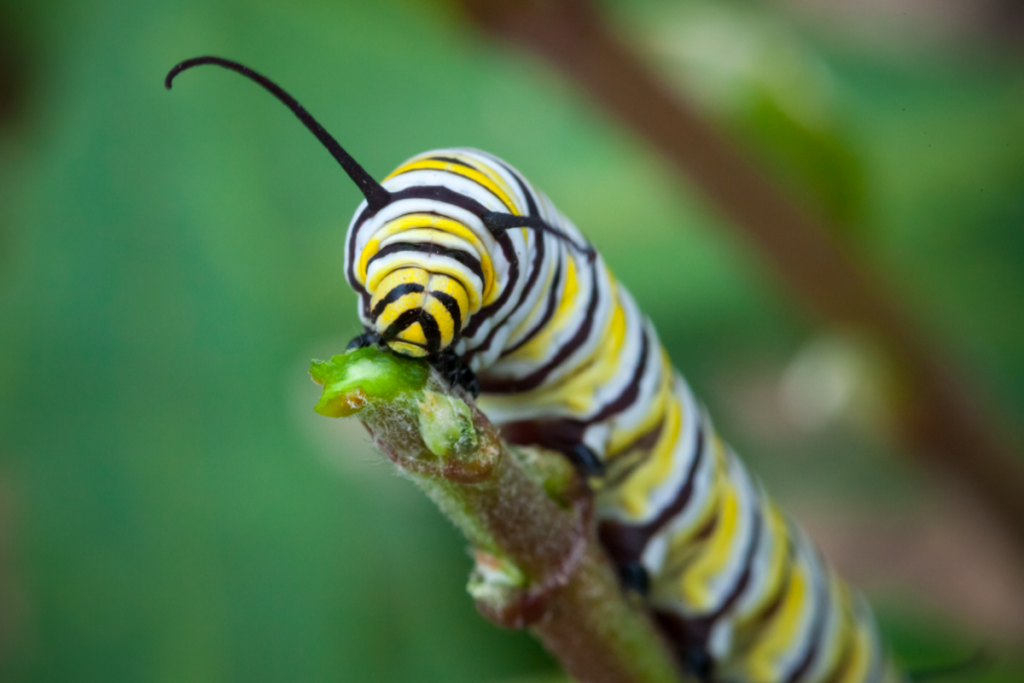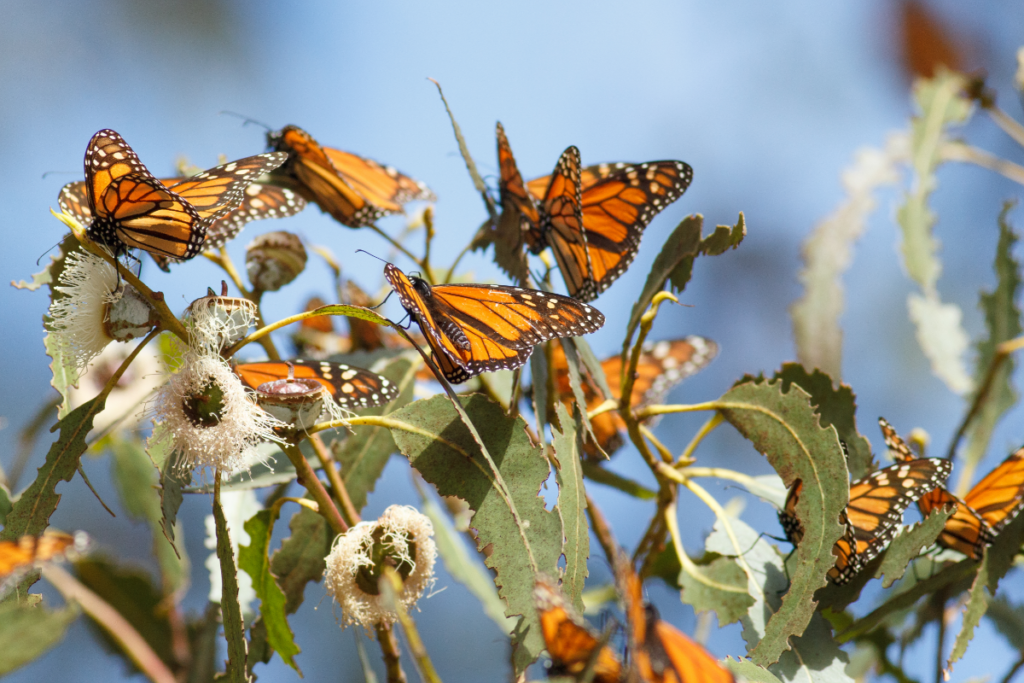Welcome back to the Lab!
It probably comes as no surprise that we highly encourage using invertebrates as teaching tools for a wide range of scientific subjects, from physiology to biomimicry. They make for invaluable classroom resources, and teachers love them for their ease of care. But when working with live animals, ethical questions often crop up, and when it comes to insects, the question is often, “Can we release them?” And what about rearing and releasing insects in the name of conservation? No insect exemplifies the challenges of ethically rearing and releasing insects better than the monarch butterfly.
Monarch butterflies are the irrefutable poster child for insect conservation. Efforts to boost their population have been ongoing for decades, and despite our best efforts, numbers are still declining. As a result, many have turned to captive rearing as a solution, whether in their home or in massive breeding operations. But regardless of intent, captive rearing can result in negative consequences for the individual butterflies and the population at large.

Monarch conservation began in earnest in the late 90’s – early 00’s with the founding of several organizations aimed at recouping monarch numbers and restoring monarch habitat.
Around that same time, monarch researchers began to notice a troubling trend within wild populations: a leap in the prevalence of a monarch-specific parasite known as Ophryocystis elektroscirrha.
Ophryocystis elektroscirrha, or OE as it is known within monarch circles, is a microscopic protozoan that has existed almost as long as monarchs have, reducing monarch fitness (i.e. survivability) and even causing monarch fatalities in extreme cases. Infected adults will drop OE spores on their host plant, milkweed, and the spores are eventually ingested by monarch caterpillars when they consume the plant. The spores develop inside the caterpillar, and by the time it reaches adulthood, it will house millions of spores on its abdomen.
Until recently, the presence of OE within monarch populations has mostly been a non-issue; infected monarchs may be unfit to reproduce, therefore neither passing along their genes nor the parasite. Prevalence was low enough not to cause concern, so why the sudden increase in cases when monarch conservation went mainstream?

In a recent blog post on monarchscience.org, researcher Andy Davis proposes 3 anthropogenic (human-related) sources for the increase in the OE parasite. The first is commercial monarch-rearing operations. It seems like a no-brainer at first: Monarch populations are dwindling, so why not just raise and release more monarchs? Many companies will tout themselves as advocates for monarch conservation and offer monarch-rearing kits for mass release. But research has shown that not only do these efforts not help, they actively hinder monarch populations from rebounding by spreading more spores of the OE parasite. In mass breeding operations, the parasite spreads quickly, and once infected butterflies are released into the environment, wild butterflies are at major risk of infection.

The second proposed source for the increase in OE prevalence is homeowner rearing and release. Many well-meaning monarch enthusiasts will venture out and collect eggs or larvae with the intent of rearing them at home and releasing them later. Again, this intuitively feels like a step in the right direction: if you can rear them under ideal conditions, then you can help more monarchs safely reach adulthood without the threat of predation. But again, OE is not visible to the naked eye, and one infected larva can quickly spread OE throughout an entire rearing operation until each butterfly is infected. At this point, instead of just one butterfly with reduced fitness, you can have dozens, and the chance that those butterflies successfully migrate and reproduce is greatly reduced as a result.
The third proposed cause of OE spread is the growing popularity of tropical milkweed. While a good freeze would likely cause any tropical plant to die back during a Montana winter, in temperate to tropical zones, tropical milkweed can stay green year-round, again increasing the abundance and spread of OE. In addition to spreading the parasite, there is some evidence that tropical milkweed can disrupt migrating monarchs. Even in northern climates, tropical milkweed may grow later in the year than native species, which can trigger a breeding cycle in adult monarchs when they should be migrating.

This message is not meant to discourage anyone who has a passion for conservation and wants to do their part. There are plenty of things you can do to help monarchs that don’t involve raising hundreds of butterflies.
Here are some guidelines for responsibly rearing monarchs, outlined by the Xerces Society:
- Rear no more than ten monarchs per year (whether by a single individual or family).
- Collect immature monarchs locally from the wild, heeding collection policies on public lands; never buy or ship monarchs.
- Raise monarchs in separate containers and keep rearing containers clean between individuals by using a 20% bleach solution to avoid spreading diseases or mold.
- Provide sufficient milkweed, including adding fresh milkweed daily.
- Keep rearing containers out of direct sunlight and provide a moist (not wet) paper towel or sponge to provide sufficient, not excessive, moisture.
- Release monarchs where they were collected and at appropriate times of year for your area.
For more information, please check out the entire article over on the Xerces blog, where you can find more in-depth information regarding monarch conservation and research.
Until next time, thanks for visiting the lab!
Bug Wrangler Brenna
brenna@missoulabutterflyhouse.org
Want to revisit a previous Notes from the Lab issue? Check out our archive! Do you want to request a subject for an upcoming issue? Email me at the address above and put “Notes from the Lab” in the subject line.